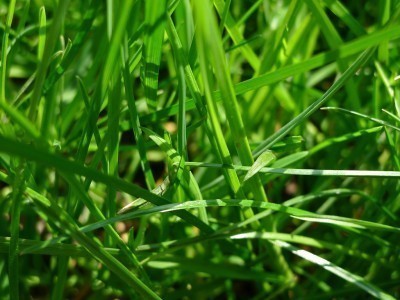






Choosing the right grass for your yard can make the difference between having a low-maintenance lawn and one that requires a lot of upkeep. Keep reading to learn more about the proper grass selection.
Grass seed that grows slowly, thickens easily, and discourages weeds or other pests is important for a healthy lawn. Grasses vary in color, appearance, and growth habits.
Determine how much time or money you are willing to spend on your lawn. Higher-maintenance grasses mean more work for you and less money in your pocket.
The type of grass seed you choose should be determined by the growing conditions of your landscape. For instance, how much sun and shade does the site receive? What is the soil like?
Choosing the right grass for your lawn includes determining how it will be used as well. Will the lawn be used simply for appearance or other purposes such as entertaining, playing, gardening, etc.? Consider your lawn requirements and compare brands carefully. The extra expense for higher-quality grass seed is usually worth it. Since most lawns have a variety of growing conditions, choosing those which are blended or mixed, such as with cool-season grasses, may be helpful.
Different grasses have their own strengths and weaknesses, growing wherever they are better suited within the lawn. For instance, with a mixture containing bluegrass and fine fescue, the bluegrass will grow happily in sunny locations, while the fescue will thrive in shady areas. Lawns consisting of mixed blends are also more resistant to disease and pest problems.
Warm-season grasses are usually planted as a single seed, not a mixture. Depending on your needs, these can be as good a choice as any other. The vigorous growth patterns of warm-season grasses make it difficult for other types of grasses, or weeds, to compete. Some grasses, such as tall fescues and native grasses, also look better when planted alone.
Grass is great, but less lawn means less maintenance. Consider using easy-care ground covers that don’t require any mowing or trimming. Ground covers like liriope (also known as lilyturf or money grass) and English ivy do not require mowing and can make good landscaping fillers, especially in hard-to-mow areas.
If all else fails, you can always check with your local Cooperative Extension for grass and lawn recommendations in your area.
Choosing The Right Mulch For Your Garden - 3 Factors To Consider
Choosing the Right Landscaping Materials for your Garden
Choosing The Best Underground Lawn Irrigation System for Your Lawn
How to Feed Your Grass the Right Way
Choosing the Right Plastic Garden Furniture for Your Garden
Copyright © www.100flowers.win Botanic Garden All Rights Reserved